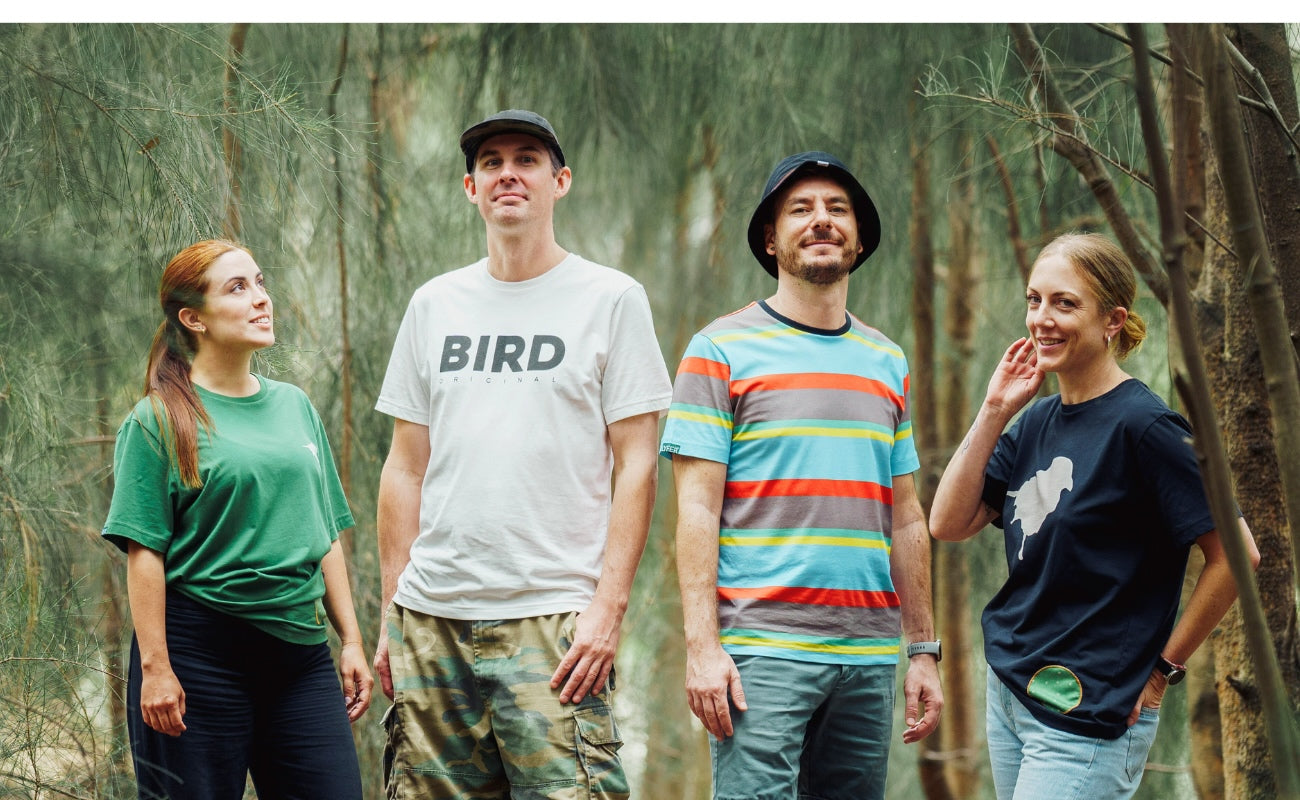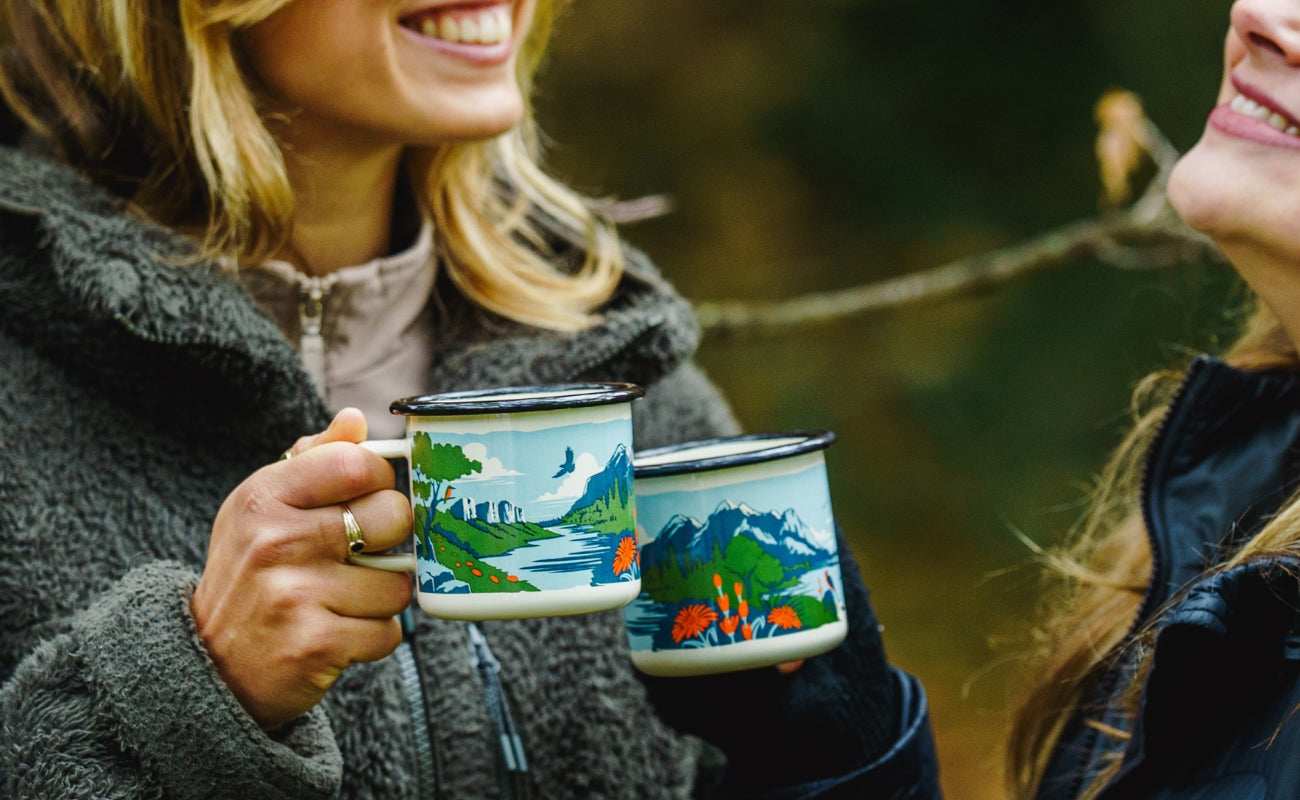A guide that sees birding through a slightly different lens.
VOL. 05
What To Do When You Actually See A Bird.
Read time - 8 minutes, and worth every second!
This birding thing, whose idea was it anyhow? It’s seriously consuming, right? You haven't seen friends or family for weeks. Your next holiday is now revolving around what birds you could possibly see. Your’e now also struggling to hold outdoor conversations with anyone, your tuned in to the birds. It’s not 'healthy' (but it's also very healthy).
So, where are we at? Let’s take a quick recap. You’ve got your basic gear - bins, your field guide, and your LYFER notepad. You’re across the etiquette (if youve missed it, you can read it here), you know the basics of where to bird, and you’ve tuned your ears in.
And now, it all comes down to this heartbeat-skipping moment. The thrill you’ve been waiting for. You actually see a bird, proper. You catch a glimpse. You raise your bins with shaky excitement. Your fingers hover over your notebook, and suddenly all that calm and breathing exercises you've invested in, dissolves into nothing. It's now all primal instinct. So what do you do now?
My heart skipped a beat
In this MBG volume 5 we're going to try and slow down that beautiful chaos for you. Steady your sight, while calmly reaching for your “anatomy of a bird” page in your LYFER fieldpad. (product plug!)
"Start writing it down or sketch it out if that is your thing. Writing down observations really does work."
Don't freak out: Breath & Observe
Breathe, stay present
That first sighting can feel so super-electric. When you are out with the intention to 'be with the birds', it's pretty cool. Youre not out for a nature walk, you are out for a bird walk.
We remember the heart jumps, the hands twitch, and that uneasy feeling that our panic reaction, will have that bird gone in seconds. The best thing to do? Pause. Ground yourself, and steady those binoculars. A calm birder sees more. Birds will feel your energy, much like a horse senses fear (don't fact check that!)
Quick scan using your “anatomy of a bird” page
Your LYFER field notepad has the bird anatomy diagram for a reason, so use it. If you dont have one, familiarise yourself with the key bird parts, this interacrtive game from Merlin Id is great fun, check it out here.
Let your eyes sweep the bird quickly, matching what you see to those key features, beak, wings, tail, general posture. This little reset gives you focus before your brain starts overthinking. Start writing it down or sketch it out if that is your thing. Writing down observations really does work.
It’s all in the detail
Notice them broadly, literally.
Think big picture before you get lost in the details of that bird. Is the bird a little chunky or is it super slender? Is it short-tailed? Is it long-winged? High in the canopy or low in the grass? These first impressions are often more useful than trying to lock onto exact colors right away.
Ok, now let's go in for a bit of colour, pattern, and markings.
Once you’ve locked in the overall look, start focusing in on the particulars. A stripe over the eye, a certain marking on the cuff of its wing, a streaked chest, or a flash of colour on the rump. (Be respectful, sorry birds) These are the “field marks” that field guides and apps will use to help you narrow it down.
Observe behavior and habitat
How is the bird moving? Is it flitting from branch to branch, probing tree bark, hovering over water, or strutting on open ground? And where is it? Birds often tell you who they are just by how they behave and where they choose to live.
Field-Guide & App Use: Know When to Peek
Use your field guide wisely
The temptation is to dive into your field guide (or app, shame on you!) right away but try and resist it. Keep your eyes on the bird as long as you can, commit details to memory or in your notepad, and only then, when the bird does what it always does and leaves you, flip to your guide. That way, you’re not losing precious seconds while the bird disappears. Better still just note what you saw down.
Apps are powerful, but don’t become a crutch
Merlin, eBird, and similar apps are brilliant tools, and they are a must especially for ensuring that you observe and log a bird correctly (think what you are doing for citizen science!). But try not to rely on them too heavily. The real skill,and joy, comes from sharpening your own eyes and ears first.
Apps should back you up, not lead the way, but we get it, it takes time and having your trusted assistance at your side is helpful.
Capture It in your Field Notepad
Write what you see
Your notepad is your memory bank. Jot down the essentials: date, time, location, weather, and then your raw observations. Was it robin-sized? Picking insects from bark? Did it flash a white rump? Even a messy sketch can help you remember what words sometimes can’t.
Beyond these observations, there really is something wholesome and real about writing in a pad while you're out in nature. It feeds the soul and the mind. It also makes you look rather intelligent to pass by people who think you're a committed scientist doing crucial research.
Optional: Record or photograph
If you’ve got time and the bird isn’t bothered, a quick photo or audio clip is a handy backup. A phone-through-bin shot isn’t going to win awards, but it can help confirm IDs later. Just remember, the bird’s comfort comes first. If you can ask for permission, it wouldn't go astray and it's ok to talk to birds, they're used to it.
Reflect, Share, Repeat
Cross-reference later
Once you’ve stepped away from the birding moments, use your guide or an app to confirm what you saw. With your notes, it’s easier to be accurate, and you’ll start building confidence that your first instincts were right. It’s a great feeling when you start to observe birds and it’s rather addictive too.
Also, It is very annoying to your friends who have to put up with you calling random bird names mid-listening to them, saying. “Did you hear that? That was a white-winged chough”, "Sorry, what did you say?"
"It also makes you look rather intelligent....you're a committed scientists doing crucial research."
Log your sighting - It's time for your lifer list.
Creating a bird list / lifer list is something you should embrace. Logging all the birds you have spotted in your new lifestyle choice. Whether it’s adding to your eBird profile or simply keeping a personal journal, logging sightings helps you track your growth and gives back to the birding community through citizen science.
Celebrate and connect
Don’t forget the joy. We are serious, birding is so bloody good for you. Share your sightings with friends, online groups on your social accounts. Birding isn’t about racing to tick names, it’s about those small but memorable moments that will stay with you long after the sighting. Also sharing it, keeps birds in conversation and this will remind everyone just how magical and vital they are to our planet.
12 step BIRD recovery
Your Checklist:
- Pause and ground yourself
- Use your “anatomy of a bird” page
- Observe size, shape, posture
- Note color, pattern, and field‑marks
- Watch behavior and habitat
- Check your field guide if needed
- Use apps mindfully
- Record key details in your notepad
- (Optional) Photo or audio record
- Confirm ID later at leisure
- Log sighting in your life‑list or app
- Enjoy the moment—and share it.
- Repeat
Next up:
Vol. 06:
Glossary of Bird Words: 30+ Bird-watching terms to wrap your head around

